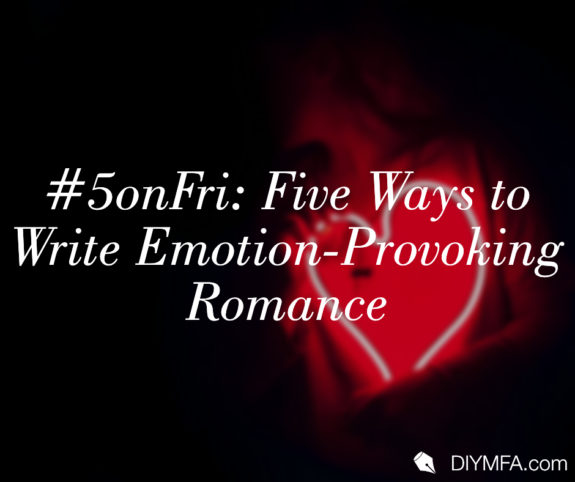I once asked on a social media site why people read romance novels. I received two primary answers: a guaranteed happy ending, and the way the books make them feel. As a romance reader myself, I couldn’t agree more. I turn to that genre when I want to feel deeply, and experience love through the eyes of the characters.
Authors of all genres want to stir a reaction in their reader. In romance, the bar is even higher. A good romance pulls the reader in so deeply and irrevocably, they become completely lost to the world around them. It’s what I crave when I read a good love story, and what I aspire to create when I write them.
So, what does it take to write gripping emotion in romance? Every author has a different approach, but here are a few things that work for me:
1) Set the mood
There are certain parts of a book I can write well from anywhere, whether that’s a coffee shop or tapping it out in a note on my phone between meetings. But if it’s a high-stakes scene that’s meant to garner emotion, I make intentional choices about my surroundings.
Think about what stirs emotion for you. A meaningful place, a certain type of music, a particular scene in a movie? Set up your writing space with things that match the emotion of the scene you’re writing. Watch an intense scene from your favorite movie for inspiration. Listen to a song that matches the mood of the situation your characters are dealing with. Write late at night when you’re alone. When it’s dark and quiet. Where you can literally put yourself in the necessary state of mind.
2) Think outside the box
Emotional doesn’t always = sad or upset. When I think about my favorite books, I can recall feeling a multitude of emotions as I read them.
Joy. Anger. Desire. Remorse. Sympathy. Despair. Pride.
It’s easy to get caught up in the high-stakes scenes of extreme sadness or extreme happiness, but remember to pull the reader in at every moment, in every experience. One resource I love is the Emotion Thesaurus from One Stop for Writers, where they list over 100 emotions (you read that right) and examples of how a person might feel internally and act externally when experiencing each one.
3) Use your senses
In any emotional situation senses are heightened. When writing those scenes, constantly think about everything the character might experience, and not just those internal feelings. What does it smell like? Does that scent trigger a certain memory, or make the emotion stronger? What does it sound like? Is the sound soothing, or like nails on a chalkboard? Is there a taste associated with the situation? Does touch make the emotion all the more visceral? Is there one specific thing the character focuses their gaze on, that brings everything to the forefront?
4) Actions speak louder than words
I remember a heart-wrenching scene from All Your Perfects by Colleen Hoover, a book about a couple struggling to repair their marriage. The man is desperately repeating “I love you” over and over, but that’s not what brought the power. How did I, the reader, feel his desperation and despair? It was the tears streaming down his face, and the crack of his palms slamming down on the hood of the car with every word that had my heart in my throat. It would have been completely different had he just stood still and calm beside her, his fingers in her hair, whispering the words in her ear. Both have weight of emotion in their own way, but create completely different experiences for the reader.
5) When you do use words, make them perfect
Authors know their way around language and words. There are times when word choice isn’t all that important, and there are times when the choice between two words can make or break a scene, and completely change the reader’s experience. In my novel Perfect Distraction, just before the hero kisses the heroine for the first time, the following words are pulled from his chest: “I have to.”
He doesn’t want to kiss her. He wouldn’t like to kiss her. He doesn’t even need to kiss her. He absolutely has to kiss her in that moment or he might die. Take the time to consider the options and don’t rest until you find the perfect word that garners the perfect emotion for every scene.
Some of these suggestions might work for you. Some might not. But if you write romance, I urge you to consider these and other ways you might inject a little more emotion into your story. It’s a known fact that the number one reason people read romance is a guaranteed happily ever after—but the first step to ensuring readers care about where your characters end up is to make sure they feel a deep connection to the story. If the reader feels invested, they’ll keep turning until the very last page.

Allison Ashley is a music-loving, coffee-drinking mom of two who loves love stories. She’s an oncology pharmacist and spends her days focused on helping patients through one of the hardest things life can throw at them. Her escape has always been books–specifically books about happiness, love, and laughter–and it was inevitable that she’d eventually write her own. Her debut contemporary romance novel, Perfect Distraction, is available as a paperback from Amazon and anywhere digital books are sold.







